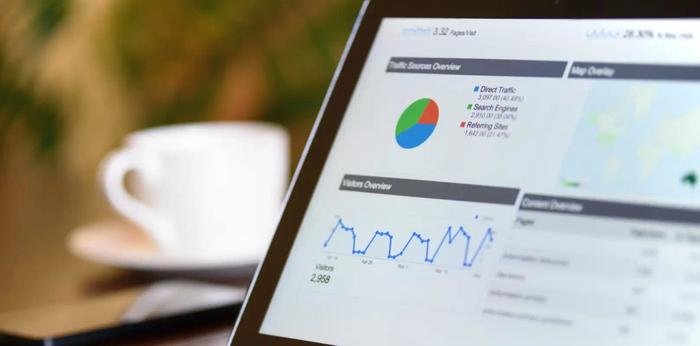Thinking about your own life, there are certain behaviors or indicators that you can use to predict future outcomes relatively accurately.
For example, if you increase the number of minutes you exercise every day, you'll anticipate weight loss.
If you stop exercising and increase the amount of junk food you consume, it's reasonable to expect that the opposite will happen.
These sorts of behaviors are lead indicators, and they are extremely valuable in sales organizations.
In sales, lead indicators are a predictive measurement of performance. They can be used to forecast future outcomes, and they're indicative of what you could expect to happen.
In other words, they're one of the best tools available for sales teams because they offer insight into what the future might look like.
In this article, we'll take a more in-depth look at the concept of lead indicators, explain the difference between leading and lagging indicators, provide some of the most important examples of lead indicators for sales organizations, and explain why this all matters so much to salespeople and sales managers.
What are leading and lagging indicators?

Businesses rely on key performance indicators (KPIs) to assess performance.
These are defined as quantifiable metrics, which are used to gauge how well the business is performing or to measure progress toward a specific goal.
KPIs can be broadly divided into leading and lagging indicators.
Lead indicators
In an article published by Forbes, Bernard Marr uses a vehicle analogy that can help you better understand lead indicators.
According to Marr, you should think of your business as a car, and lead indicators are the equivalent of looking through the windshield. They tell you what's ahead of you. They indicate where you're going next.

Some businesses find lead indicators harder to identify and define than lag indicators. This is because they can vary wildly depending on the type of business you're running and the types of activities you're involved with.
What they tell you is also less certain than with lagging indicators, as we'll cover a little later in this post.
Within a typical sales organization, a basic example of a lead indicator would be the number of sales calls made by sales reps. In and of itself, this metric won't tell you anything certain about your business performance.
For instance, it can't tell you how many deals you closed or the money you've made. However, it does give you an indication of what you might expect.
Generally speaking, unless there's a specific reason to think otherwise, businesses might assume that an increase in the number of sales calls made will likely lead to an increase in the number of sales.
By the same token, less calls is likely to lead to a reduction in sales. Lead indicators like this allow you to anticipate outcomes.
Lag indicators
Continuing with Bernard Marr's analogy, lagging indicators are like looking in the rearview mirror. They show you the road that you've already traveled down. They are the outcome of your activities.
This article for Indeed.com describes lagging indicators as data points that are in the past. In other words, they show what's already happened.
Lag indicators are sometimes known as output indicators because they're the end product of what you've put in as a business.
They tend to be easier to measure than lead indicators and are also easier to clearly define.
However, at the same time, they're more difficult to change or improve because lag indicators can be impacted by numerous factors.
In sales, your lag indicators tell you the current status in terms of actual sales performance.
The metrics are straightforward to understand, but identifying the underlying causes may be more complex.
Examples of typical lagging indicators in your sales organization would be the revenue generated over a specific time period or the average revenue generated per deal.
These KPIs are clear in what they tell you and are easy to measure and interpret, but they are metrics that can only be changed by making wider behavioral or strategic changes.
Understanding lead indicators for sales teams
Lead indicators are used in several fields, including economics and the business world.
Equipped with an understanding of what leading and lagging indicators are and how they differ from one another, it's also important to take a more in-depth look at the role of lead indicators in sales.

For sales teams, leading indicators are an indirect, predictive measurement of performance.
They don't directly indicate what your key sales metrics are going to be, such as the revenue you generate or the number of deals you close.
However, they can give you an indication and serve as a guide for what to expect.
Leading and lagging indicators: cause and effect
There is a cause-and-effect relationship between leading indicators and lagging indicators.
For instance, if you use the example of the number of sales calls made as a lead indicator, it makes sense that making more sales calls will lead to more sales.
In reality, there are multiple reasons why this relationship may not be quite as straightforward as that, which is why leading indicators are usually considered less reliable or definitive than lagging indicators.
In addition, the cause-and-effect relationship can be difficult to understand or pinpoint. After all, some behaviors or factors may influence your lagging indicators, which aren't immediately obvious.
This sometimes means that a business will have unidentified or unrealized lead indicators. Effectively, these are potential sales analytics that you aren't tracking.
However, if you were to be able to make the connection with the relevant lagging indicator, then leveraging these could help you boost sales performance.
For example, there could be some correlation between the number of times your blog posts are shared and the number of sales you generate.
This relationship may not immediately stand out as an obvious lead indicator, but it could become more apparent over time, and this may then make it worthwhile to continually track this metric.
Identifying lead indicators for sales environments
Some sales organizations struggle to pinpoint leading indicators because they're usually less obvious things to measure than lagging indicators.

In an article published on Medium.com, Paulo Silveira breaks down some of the most useful ways to identify lead indicators, and we've summarized two here:
- Statistical approach - Create a list of activities that temporally precede a lagging indicator and identify which ones are measurable. Calculate the correlation coefficient between the lagging indicator and each measurable activity.
Based on this correlation, place them in order so that you can identify the most likely lead indicators.
- Value stream mapping - Make a list of business metrics and strategic indicators. Link the relevant ones to the sales team. Ask key stakeholders within the team to let you know what's under their control that could influence the metric or how they believe the metric or indicator can be improved.
Explore the answers for possible lead indicators.
Lead indicators also need to be continually evaluated over time. In some cases, the KPIs that you think are lead indicators aren't actually relevant to your lagging indicators.
Examples of leading indicators in business settings
To provide some examples of leading indicators in business, imagine your sales team has established lagging indicators. These may include total revenue generated, sales deals closed and revenue per customer.
You should be able to identify leading indicators that are related to these metrics, such as:
- Sales calls made
- Emails sent
- Unique website visitors
- Leads generated
- Sales rep closing ratio
- Demos requested
- Meetings arranged
- Email opening rates
As you can see, these are all indicators that you would expect to provide some insight into your sales performance results, even if there are no guarantees.
For instance, you'd expect that increasing the number of sales calls, emails sent, and meetings arranged would lead to more sales and increased revenue.
All of these lead indicators are also elements that your sales team has some level of control over, which means actions can be taken to boost each of these metrics.
The importance of leading indicators in sales
Below, we'll break down some of the specific reasons why lead indicators matter in sales.
Direct control
One of the biggest reasons lead indicators matter to salespeople is that they're the KPIs that are typically under the direct control of your team.
Though you can't simply look at lagging indicators — like revenue — and then decide to increase the number at will, you do have much more scope to make direct changes to your lead indicators.
If you identify the number of sales calls made as a lead indicator, it's possible to increase that number through day-to-day activities.
For example, you can encourage salespeople to make more calls, align sales and marketing, generate more leads for follow-up, or hire more salespeople to handle calls.
Similarly, if the lead indicator you're looking at is website views, you can also find ways to increase this number.
For instance, you can allocate more resources to boosting search engine optimization (SEO) efforts or increase your investment in your content marketing strategy.
Over time, you can track your lead indicators and take steps to fix metrics going in the wrong direction.
Forecasting and targets
Another significant reason that lead indicators matter to salespeople is that they help to set expectations and serve as the basis for forecasting efforts.
By measuring lead indicators and tracking changes over time, it's usually possible to get advanced notice of significant changes to lagging indicators.
Tracking indicators helps sales teams plan for the future and enables them to make strategic adjustments quickly.
Without measuring and tracking lead indicators, you may not be able to plan for changes in your financial results or other KPIs.
As lead indicators can be directly influenced, they are also useful for setting performance targets.
If you notice that the number of sales calls made or sales meetings arranged starts to drop, you can set a target to push these numbers back up. Generally, this will influence the relevant lag indicators.
Measuring impact
Finally, your leading indicators allow you to more quickly measure the impact of your strategy and your current sales behaviors. As an article by Shopify outlines, lead indicators provide faster feedback on what you're currently doing versus lag indicators. That's because your lag indicators will take longer to show up.
When you decide to make changes to your sales strategy, this is especially significant because it allows you to see some early indicators of what the impact of those changes will likely be.
Also, when you continually track your lead indicators, you can understand the extent of their impact on your key lagging indicators. From there, you'll know which indicators to pay the closest attention to.
Final thoughts
The close relationship between lag and lead indicators means it's important to continually identify, track and monitor both of these KPIs.
However, lead indicators are predictive indicators, which means they can usually be more directly influenced by your actions and those of your colleagues.
This makes them especially useful to sales teams, as they can be utilized for productivity target setting and sales forecasting.
Although lead indicators give you less certain insights into real performance, they allow you to get a sense of what to expect in the future.
This insight makes it valuable to identify these KPIs and monitor them closely. Over time, they also indicate which actions and behaviors are most critical to your most important lagging indicators.
Capsule CRM is a comprehensive online CRM that helps you and your organization see the big picture.
You'll have access to sales analytics tools, workflow automation options, task management features, and a summary of your sales opportunities.
It also integrates with tools you're probably already using, like Google Apps, Microsoft Office, QuickBooks, Xero and Mailchimp. Click here for more information and to access a free 14-day trial.
FAQ
What is a leading indicator for sales?
A leading indicator for sales predicts future sales performance and helps in proactively managing the sales process. Examples include the number of new leads generated and the activities of sales reps.
What are 3 examples of leading indicators?
Three examples of leading indicators are the number of new leads added to the sales pipeline, the frequency of customer interactions, and the time spent on sales processes.
What is KPI leading indicator?
A key performance indicator (KPI) leading indicator measures activities that predict future success. These leading metrics are proactive and guide sales management in adjusting strategies before results are seen.
What is the best leading indicator?
The best leading indicator depends on your business, but common effective ones include the number of qualified leads and the progress of deals through the sales cycle.
What is an example of a lead measure?
An example of a lead measure is the number of outbound calls made by sales reps. This leading metric directly impacts future sales revenue.
How to create leading indicators?
To create leading indicators, identify key activities that drive your sales pipeline, track them regularly, and align them with your key performance indicators to predict future sales performance.
What makes a good leading indicator?
A good leading indicator is actionable, predictive, and closely aligned with your sales team's activities. It should be measurable and provide insights into improving the sales process to drive future results.
What's the difference between leading vs lagging indicators?
Leading indicators are like fortune tellers for your business, predicting future performance. Lagging indicators are more like report cards, showing past results. You need both leading and lagging indicators to track progress and make adjustments!




